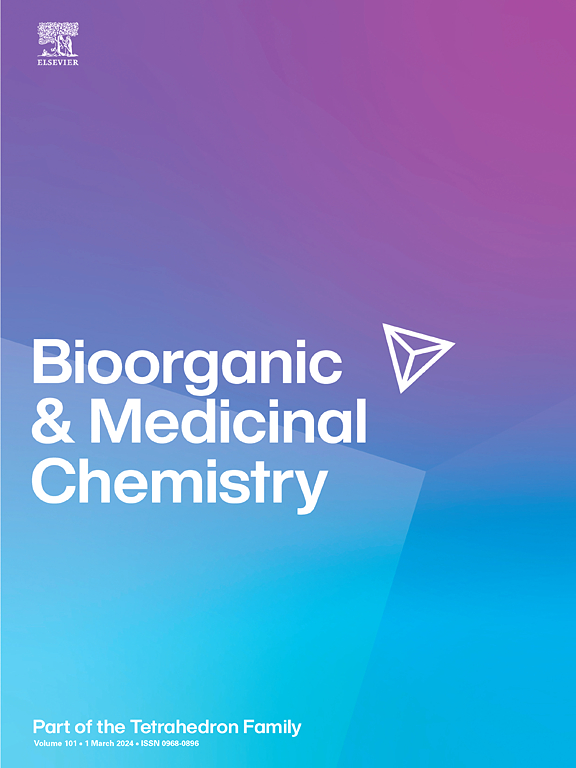Design, Synthesis, and Biological Implications of Autotaxin inhibitors with a Three-Point lock binding mode
IF 3
3区 医学
Q2 BIOCHEMISTRY & MOLECULAR BIOLOGY
引用次数: 0
Abstract
Autotaxin (ATX) is a circulating enzyme that plays a major role in the production of the signaling mediator lysophosphatidic acid (LPA). A role for ATX/LPA signaling has been described in multiple disease areas, including fibrosis and cancer. ATX inhibitors are classified in five types (I-V) depending on how they target parts of the tripartite site (active site, pocket and tunnel). We set to explore a “penultimate” type of inhibitors, targeting all these three parts at once. Designing new analogs extending on an ethyl group of the type IV GLPG1690 compound, yielded potent new molecules. Co-crystal structures confirmed compounds that utilize a three-point lock binding mode. The most potent “type VI” inhibitors, 4 and 41, displayed increased inhibitory activity (∼40-fold) compared to the type IV close analog 3. Type VI inhibitors 4 and 41 showed cellular and phenotypic activity similar to type IV inhibitor GLPG1690. Identification of this new binding mode completes this combinatorial puzzle in inhibitor design and calls for further investigation to characterize potential therapeutic benefit.

具有三点锁定结合模式的 Autotaxin 抑制剂的设计、合成及其生物学意义
Autotaxin (ATX)是一种循环酶,在信号介质溶血磷脂酸(LPA)的产生中起主要作用。ATX/LPA信号在多种疾病领域中发挥作用,包括纤维化和癌症。ATX抑制剂分为五种类型(I-V),这取决于它们如何靶向三部分位点(活性位点,口袋和隧道)。我们开始探索一种“倒数第二”类型的抑制剂,同时针对这三个部分。设计新的类似物延伸到IV型GLPG1690化合物的乙基上,产生了有效的新分子。共晶结构证实化合物利用三点锁定结合模式。最有效的“VI型”抑制剂4和41,与IV型相近的类似物3相比,显示出更高的抑制活性(约40倍)。VI型抑制剂4和41的细胞和表型活性与IV型抑制剂GLPG1690相似。这种新的结合模式的鉴定完成了抑制剂设计中的组合难题,并要求进一步研究以表征潜在的治疗益处。
本文章由计算机程序翻译,如有差异,请以英文原文为准。
求助全文
约1分钟内获得全文
求助全文
来源期刊

Bioorganic & Medicinal Chemistry
医学-生化与分子生物学
CiteScore
6.80
自引率
2.90%
发文量
413
审稿时长
17 days
期刊介绍:
Bioorganic & Medicinal Chemistry provides an international forum for the publication of full original research papers and critical reviews on molecular interactions in key biological targets such as receptors, channels, enzymes, nucleotides, lipids and saccharides.
The aim of the journal is to promote a better understanding at the molecular level of life processes, and living organisms, as well as the interaction of these with chemical agents. A special feature will be that colour illustrations will be reproduced at no charge to the author, provided that the Editor agrees that colour is essential to the information content of the illustration in question.
 求助内容:
求助内容: 应助结果提醒方式:
应助结果提醒方式:


